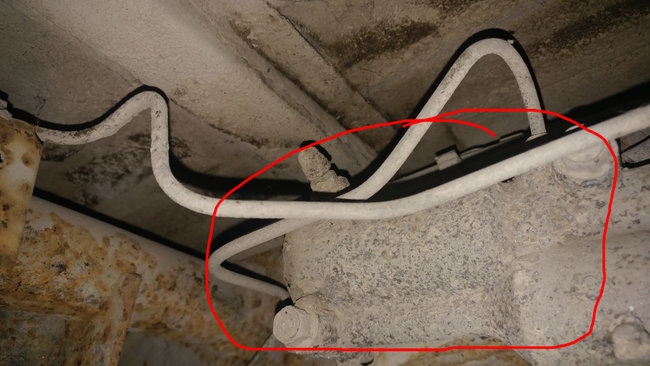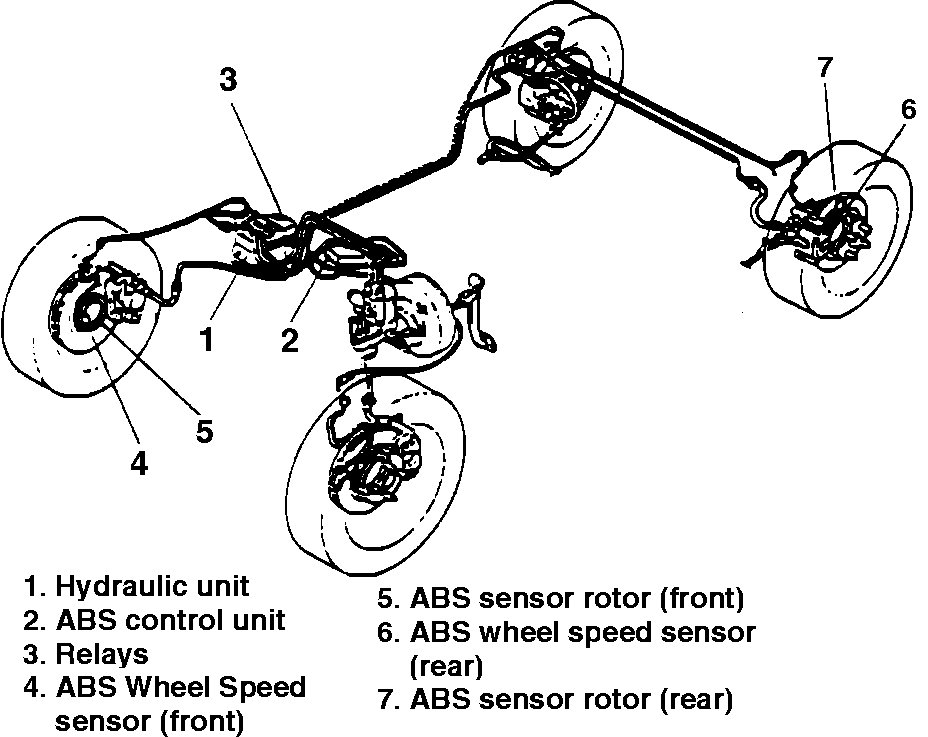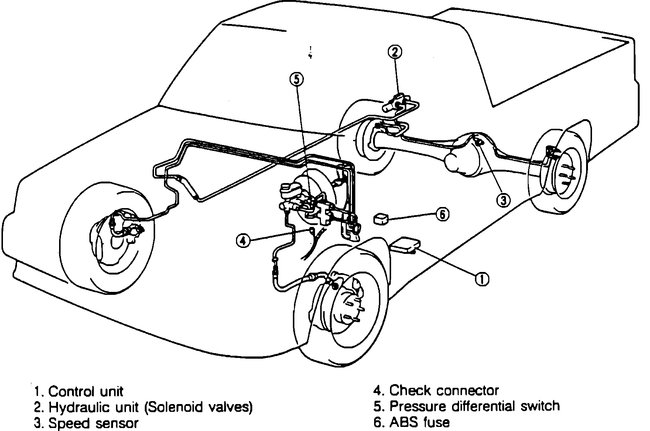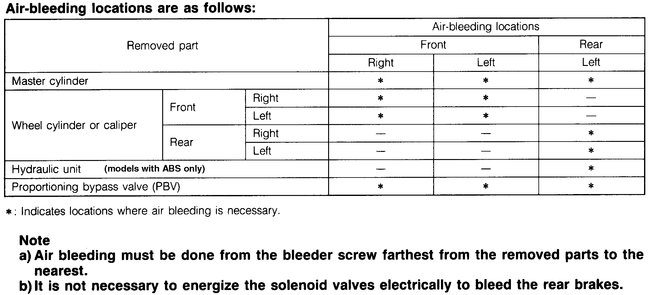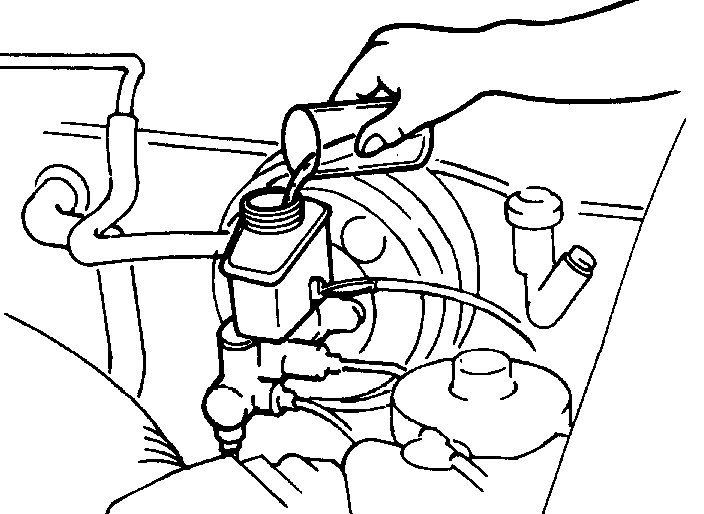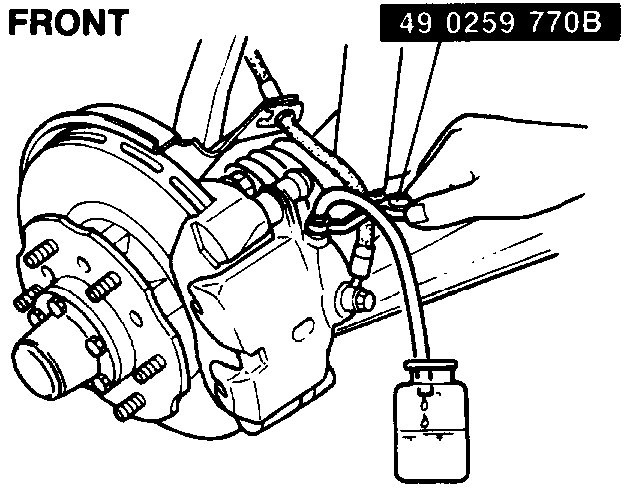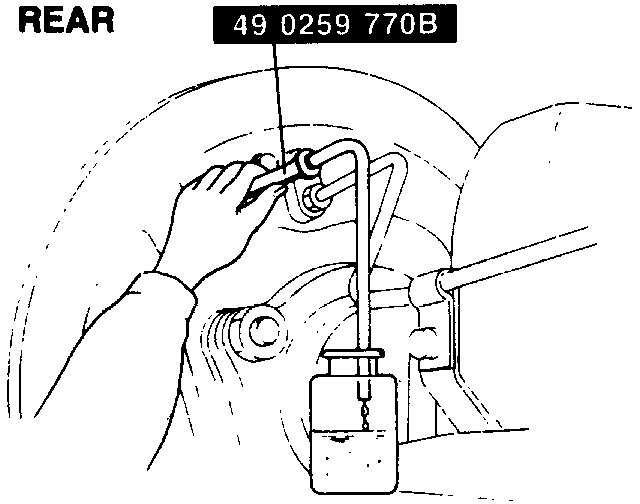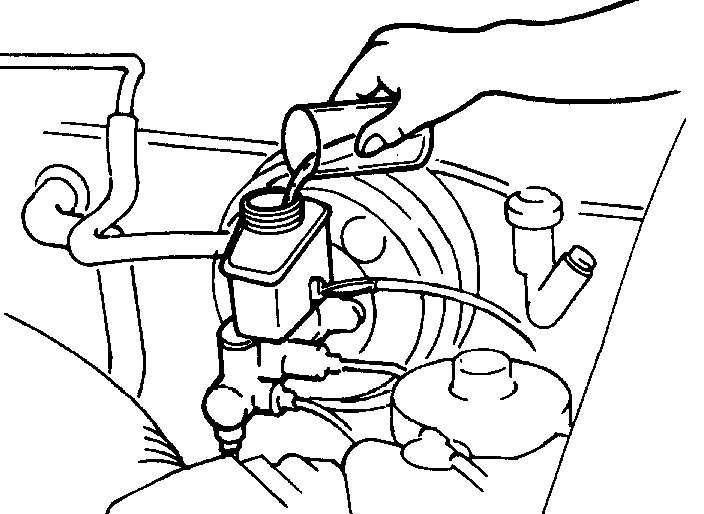Hi and thanks for using 2CarPros. Com.
The vehicle you have does have ABS brakes. It is hard for me to tell exactly what I am looking at in the picture, but at the top, it does appear to be a bleeder with the rubber boot covering it.
I have attached two pictures for you to see. Both are exploded views of the ABS system and its components / locations.
Here are the directions specific to your vehicle for bleeding the system. Pictures 3 through 7 correlate with these directions. Please pay special attention to picture 3.
_______________________________________
Bleed air as described below
1. Jack up the vehicle and support it with safety stands.
2. Fill the reserve tank with brake fluid. Be sure that the reserve tank is at least half full at all times during the air bleeding process.
Caution:
a) Be careful not to spill brake fluid onto a painted surface.
B) Use only the specified brake fluid. Do not mix it with any other type.
3. After removing the bleeder cap, connect one end of a transparent vinyl tube to the bleeder screw with the SST and place the other end in a receptacle.
4. One person should depress the brake pedal a few times, and then hold it in the depressed position.
5. A second person should loosen the bleeder screw, drain out the fluid, and retighten the screw.
Caution
a) The two people should stay in voice contact with each other.
B) Be sure the pedal remains depressed until the air bleed screw is tightened.
6. Repeat steps 4 and 5 until no air bubbles are seen.
Caution
a) After tightening the bleeder screw, check to be sure that there is no fluid leakage.
B) Be sure to clean away any spilled fluid with rags.
7. After bleeding the air, add brake fluid to the reserve tank up to the specified level.
Bleeder screw tightening torque
Front: 5.9 - 8.8 N.M (60 - 90 kgf. Cm, 53 - 78 in. Lbf)
Rear : 5.9 - 6.8 N.M (6O - 7O kgf. Cm, 53 - 61 in. Lbf)
I hope this is helpful. Let me know if you have other questions or need additional information or help.
Take care,
Joe
Images (Click to make bigger)
Sunday, July 29th, 2018 AT 9:32 PM
